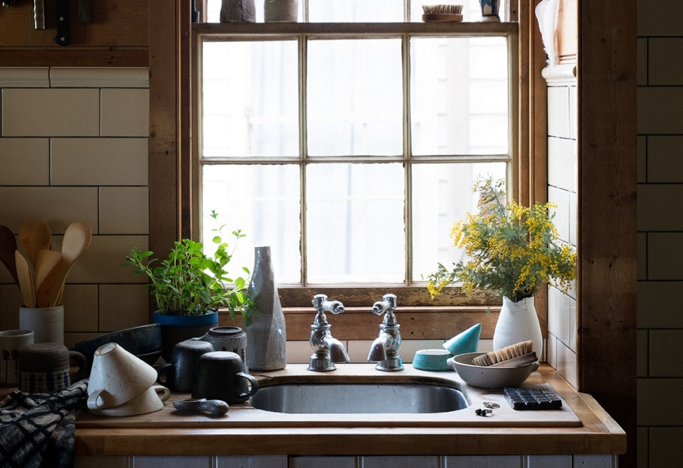Craft + Localism
With the latest change in season comes a time for many people to reflect on ways of living. For makers, it’s often a time to look inwards to practice. For communities, it’s an opportunity to look locally.
With the latest change in season comes a time for many people to reflect on ways of living. For makers, it’s often a time to look inwards to practice. For communities, it’s an opportunity to look locally.

Image: Craft Summer Catalogue — an excursion to a historic farmhouse in Tylden, Victoria with objects from Craft’s makers explores the relationship between our living spaces and the objects with which we surround ourselves. Photo by Hilary Walker.
With the latest change in season comes a time for many people to reflect on ways of living. For makers, it’s often a time to look inwards to practice. For communities, it’s an opportunity to look locally.
For me, it’s time to catch up on reading. Lately I’ve been looking to Ezio Manzini’s writing on design for social innovation and sustainability: Small, Local, Open and Connected. This visionary scenario is straightforward: the global is a “network of locals”—that is, a mesh of connected local systems, whose small scale makes them comprehensible and controllable by individuals and communities. It’s about looking local and rediscovering commons, communities, individual and social capacities, and slowness.
With this comes the valuing of how creativity and making can be embedded in everyday life, and bring positive change to communities ( see this scenario backed in the recent Turner Prize decision!). In the craft and design community, there has been a notable shift away from the ‘product’ as a saleable item, to something which engages a sense of place, community, production and learning. The significance of place is more visible than ever as we see happenings across the country over Summer.
Shimmer, curated by Tess Allas, Darrell Sibosado and Tahjee Moar, is currently on show at Wollongong Art Gallery and explores expanded notions of historical and contemporary shell-working traditions in Indigenous Australia. The exhibition includes works by Bidjigal artist and elder Esme Timbery. Esme is widely regarded as one of Australia’s most significant shell artists. Practicing since the 1940s, she comes from a long line of shell-workers from the Aboriginal mission community of La Perouse, NSW. Esme will lead a workshop sharing her knowledge and technical innovation, and offers time to learn about her community-led practice evolving from the unique historical, cultural and political contexts for Indigenous shell art practice that evolved from her place.
Only in its second year, MPavilion is now a familiar temporary landmark in Melbourne in the warmer months, gathering crowds and ideas under the purpose designed architectural commissions. MPavilion’s design and language both make specific reference to its immediate environment in the gardens along the Yarra — acknowledging ‘the Yalukit Wilum as the traditional custodians of the land on which we meet’. ‘people of the river camp’. According to the front page of their site, Yalukit Wilum means ‘people of the river camp’. Alongside dog photography lessons and talks on Urban Happiness, you can also learn traditional methods for creating indigenous smudgesticks from locally harvested native flora.
The Efkarpidis bros behind Hotel Hotel in Canberra have recently launched Fix and Make. Through the practical, experimental and philosophical, the annual program brings different peopletogether to actively question our consumption and relationship with objects. From Making as Mediation to Toys from Trash to Oyster Appreciation, it’s all there.
In the world of craft and design publishing, a new Australian platform has emerged to reflect on regionalism and making practice in the Asia-Pacific. Garland was brought to life by the editorial team Kevin Murray, Damien Wright and Olivia Pintos-Lopez with the first issue focusing on South Korean making, and future destinations to include Yogyakarta, Canberra, Mumbai, Cairns and Oaxaca. According to managing editor Kevin Murray, "Garland builds on growing creative interconnections in our region, with a particularly Australian focus on thoughtful writing and sense of place. The Korean designer-makers in our first issue raise the prospect of 'labour-making devices' that counteract the growing impact of automation." A welcome change in pace.
Take it slow, be curious about your place, enjoy making a good Summer.
Georgia Hutchison
Program Manager
National Craft Initiative
@nationalcraftau